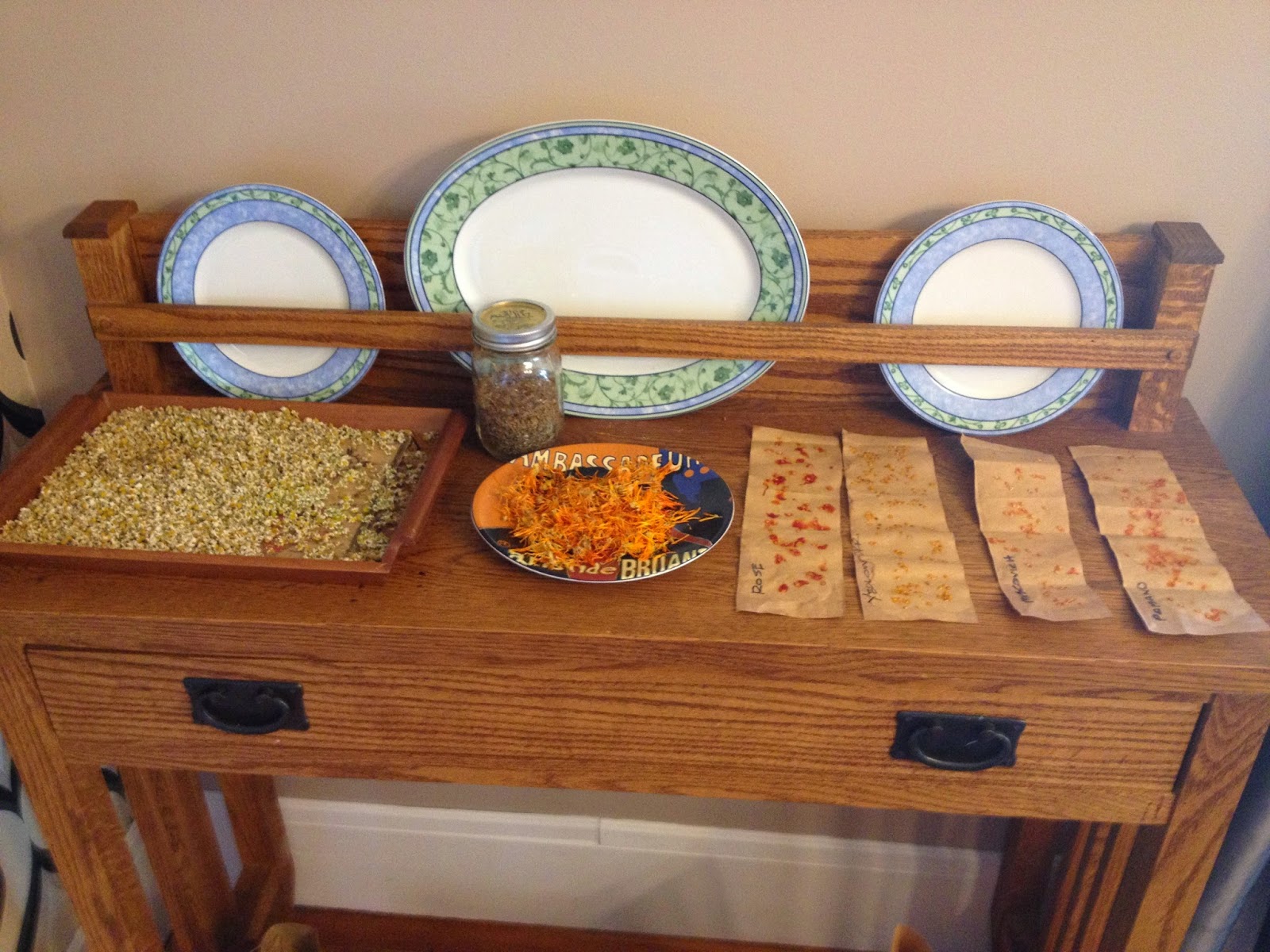Passive Preservation
We do a lot of work throughout the summer and fall to make our food last: canning peaches, fermenting cabbage into sauerkraut, brining pickles, oven-drying tomatoes. Processing gets the house all hot and steamy, and we're on our feet in the kitchen for hours at a time, stirring and jarring and getting shit done.
But sometimes, all you have to do is wait.
Over in a bright corner of the dining room, our sideboard is covered with flowers and seeds. We don't need to do anything at all to preserve them, other than let them sit and occasionally give them a stir so all parts can dry out.
That's it.
Not everything can benefit from this type of abject neglect, but our small, herby flowers are perfect candidates. They dry quickly, and since it takes a while gather a big pile, it's convenient to have them out where I can add small handfuls to the tray every few days.
Here's our chamomile harvest, in varying stages of drying. The flowers to the left are pretty much done, but there is a small cluster on the right that is freshly picked. Eventually the chamomile plants will die back, and all the flowers will be dry and ready to keep in a Mason jar.
I use the same (non) technique to drying calendula petals. Once a week I pick whatever is ready and add it to the pile. Again, there are dry petals to the left and fresher petals to the right, but over time they'll all end up looking the same. Bonus points: These smell nice as they dry, so the dining room is a great place to enjoy the good herby smells.
Another thing that does well when you ignore it? Tomato seeds. I know that lots of people let the tomatoes ferment before storing the seeds, but that's kind of messy and (in my experience) unnecessary. We've had good results just smearing seeds on strips of butcher paper (we used a cut up paper bag). That's it — just label and allow to dry thoroughly. Our germination rates are fine with this method, and it's quick and easy to grab a tomato or two of each heirloom variety to harvest all the seeds you'll need for the next year.
Once the homemade seed strips are completely dry (I always give this a couple weeks), I fold the paper and store them in a ziplock bag. Just squeeze the air out and pop it into the fridge (which is the perfect cool, dry place to keep all of your seeds — they last for years in these conditions).
That's all there is to it! Once in a while, things are easy-peasy.








Comments
Post a Comment